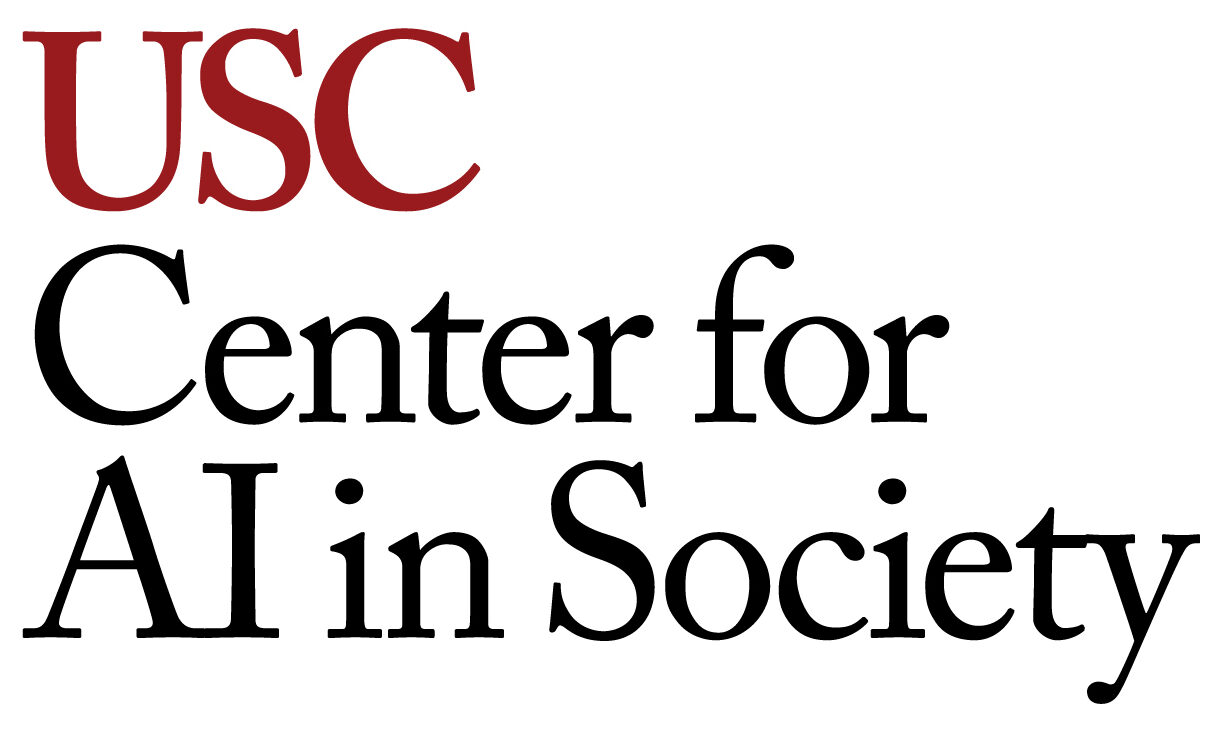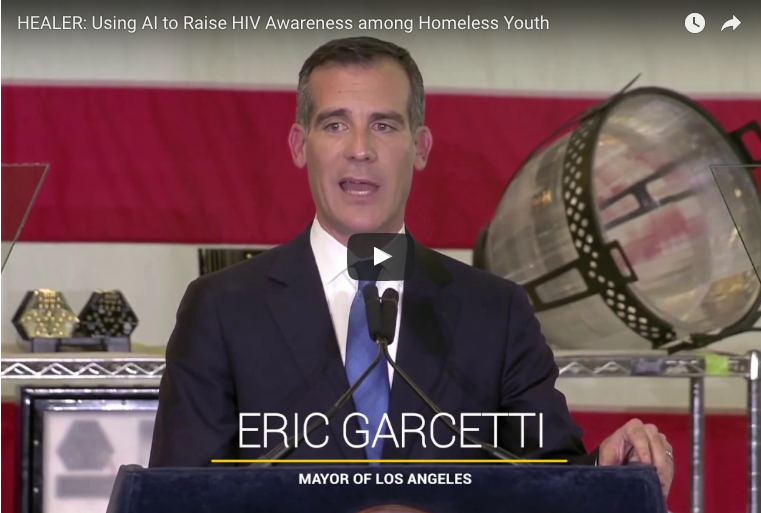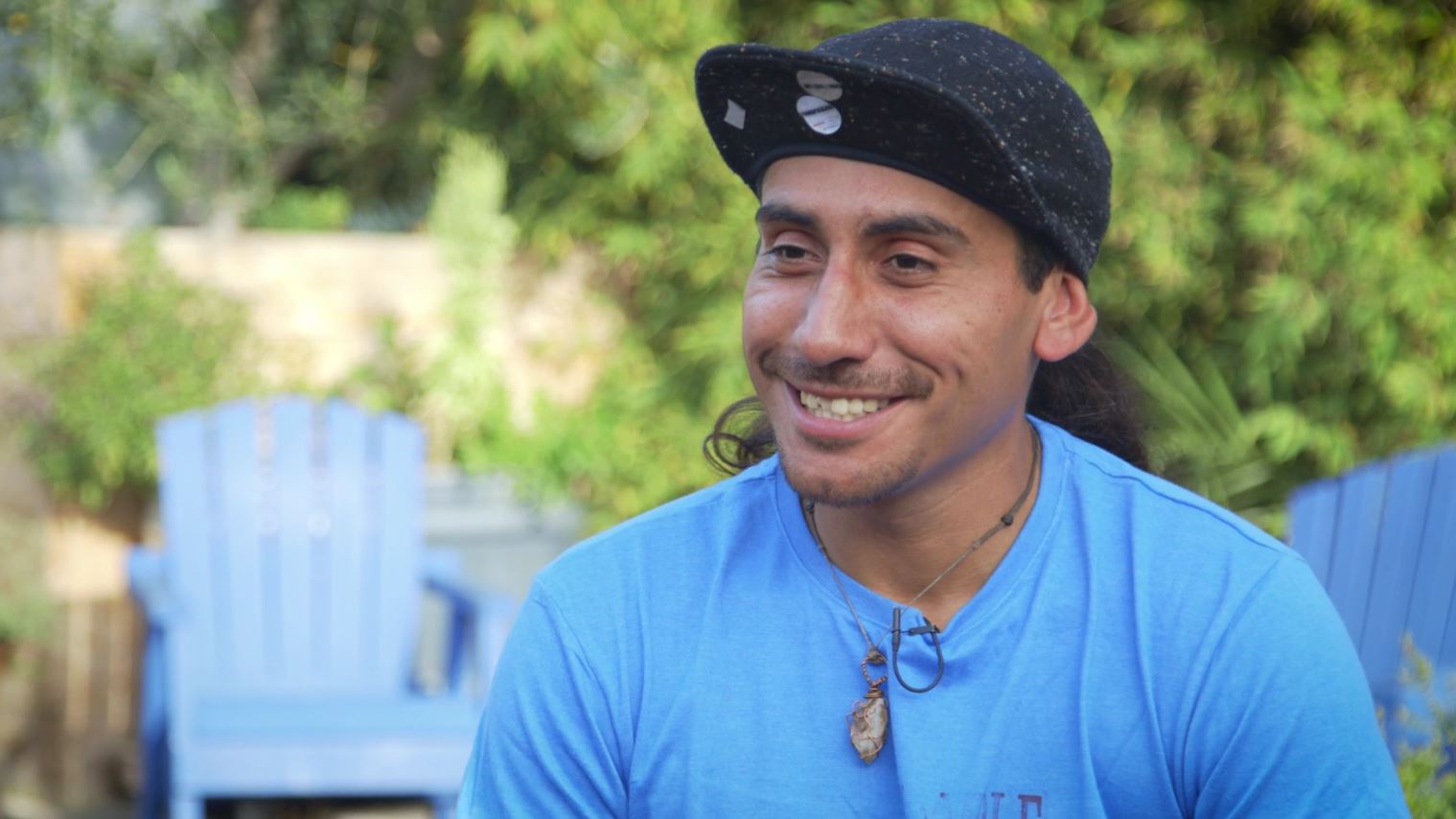Have You Heard? (HYH): Focusing on Information Diffusion in Social Networks of Homeless Youth
Recent national estimates show that there are nearly 4.2 million youth experiencing homelessness in the United States each year. These homeless youth are at great risk for contracting HIV/AIDS, with prevalence rates reported as high as 11.5%. Despite the heightened need for HIV prevention in this population, relatively few evidence-based interventions exist. This project seeks to fill this critical gap and improve the rates of regular HIV testing and condom use during sexual activity by homeless youth.
Influence Maximization for Social Good
Have You Heard? (HYH) focuses on the study of information diffusion in social networks of hard to reach populations (such as homeless youth) in order to spread information and raise general levels of awareness about dangerous diseases (such as HIV) among such populations.
The end goal of this project is to reduce rates of HIV infection among disadvantaged populations by influencing and inducing behavior change in homeless youth populations that drives them towards safer practices, such as regular HIV testing. The goal is not only to model these influence spread phenomena, but to also develop decision support systems (and the necessary tools/algorithms/mechanisms) using which information can be spread in the social networks of homeless youth in the most efficient manner. One of our primary foci in this project is to develop algorithms and tools that can be deployed in the real world.
Over the past three years, we have been collaborating with drop-in agency staff and youth experiencing homelessness at Safe Place for Youth (SPY), the Los Angeles LGBT Center’s Youth Center on Highland, and My Friend’s Place.
HIV/AIDS
HIV is a very serious infection that sees no race, no color, no gender, no economic background and not even a specific age group. It can affect anyone, at any time if they put themselves in a situation where they could be at risk. Internationally, 37 million people are living with HIV.
HIV has an extremely high incidence among homeless youth, as they are more likely to engage in high HIV-risk behaviors (e.g., unprotected sexual activity, injection drug use) than other sub-populations. In fact, previous studies show that homeless youth are at 16X greater risk of HIV infection than stably housed populations. Thus, any attempt at eradicating HIV crucially depends on our success at minimizing rates of HIV infection among homeless youth.
In order to reduce the transmission of HIV, we are using a peer leader social network-based intervention, for information dissemination about HIV. Therefore, the key question is how can we identify the most “influential” youth, to be trained as peer leaders, from the social network of homeless youth? We want to find the youth who can spread awareness about HIV and induce behavior change among their peers, in the quickest and most efficient possible manner.
Research Overview

We, in our work, try to help homeless drop-in centers use their resources more effectively by modeling this entire problem of selecting the most influential youth as an Influence Maximization Problem, which is a widely studied problem in the field of Artificial Intelligence. However, most previous work in this area has failed at addressing some key challenges that show up in the real world. Two major challenges are:
1) Constructing social networks of homeless youth is a big challenge, since these youth are a hard-to-reach population, and mapping out their social circles requires a lot of time and money. Their networks are constantly changing, and there is not a constant/consistent roster like a classroom of school children.
2) Even if we are able to construct these networks, there is always noise in the data collection procedure, which leads to uncertainty about the true structure of the social network. This uncertainty needs to be accounted before deciding who is “influential” in the social network and who isn’t.
To overcome these challenges, we use a combination of state-of-the-art techniques from Artificial Intelligence, Sequential Planning, Decision Theory and Mathematics (that we developed in our lab). In order to find out more about our techniques and algorithms, please have a look at our publications.
Current Study
We at USC CAIS conducted a 3-year study, surveying 865 young people experiencing homelessness at 3 Los Angeles area drop-in centers–My Friend’s Place, Safe Place for Youth, and the Los Angeles LGBT Center’s Youth Center on Highland. This study is using the CHANGE algorithm, created by our team members.
CHANGE uses social network data is that is gathered via in-person interviews with a subsample of the youth. Specifically, we randomly sample about 10% of the youth and then, for each of them, randomly sample one of their friends. This allows us to begin to identify the network of homeless young persons accessing services at each drop-in center. We use a combination of state-of-the-art techniques from Artificial Intelligence, Sequential Planning, Decision Theory and Mathematics to then identify who are the most influential youth, based on their positions within the network, to then train as peer leaders.
Flowchart of techniques used in the CHANGE algorithm
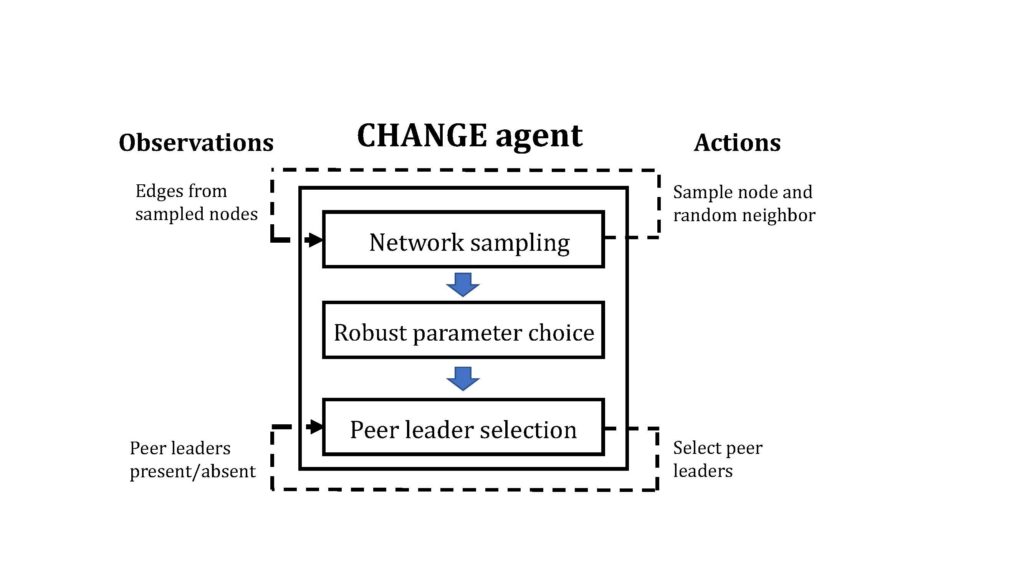
Pilot Study
We deployed an algorithm named HEALER in the real world at Safe Place for Youth–a homeless drop-in center in Venice Beach, Los Angeles. Safe Place for Youth provides free food and clothing to homeless youth of the ages 12-25, three times a week. We enrolled 62 homeless youth from this shelter into our study and we conducted three test interventions. We used HEALER’s Facebook application to generate the network (see figure below) that connected these youth.
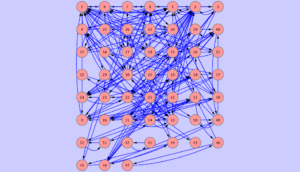
Each number here is a homeless youth (their names have been replaced by numbers to protect their anonymity), and the edges between them represent their friendships. The results from this pilot were very promising. We found that HEALER was able to spread information to almost 66% of homeless youth in the network (one month after interventions had ended). This shows that HEALER is successful at finding the most influential youth in the network.
More importantly, we found that due to HEALER’s interventions, there was a 25% self-reported increase in the number of homeless youth who get tested for HIV regularly.
Thus, HEALER was successful in inducing behavior change among the youth as well.


![]()
Science World Report, July 30, 2019: 4 Innovations in Healthcare You Didn’t Know About (But You Should!) in 2019
Mashable News, December 20, 2015: Incredible innovations that improved the world in 2015.
Mashable News, February 6, 2015: How an algorithm could help spread HIV information among homeless teens.
My Friend’s Place, February 23, 2015: My Friend’s Place and USC Partner to Prevent Spread of HIV.
Next City News, February 18, 2015: Can an algorithm help prevent HIV from Spreading Among Homeless Young People?
Motherboard News, February 4, 2015: Artificial Intelligence Could Help Reduce HIV Among Homeless Youths.
USC Press Release, January 27, 2015: USC Social Work Professors Team With Computer Scientists to Prevent HIV Spread Among Homeless Youth.


